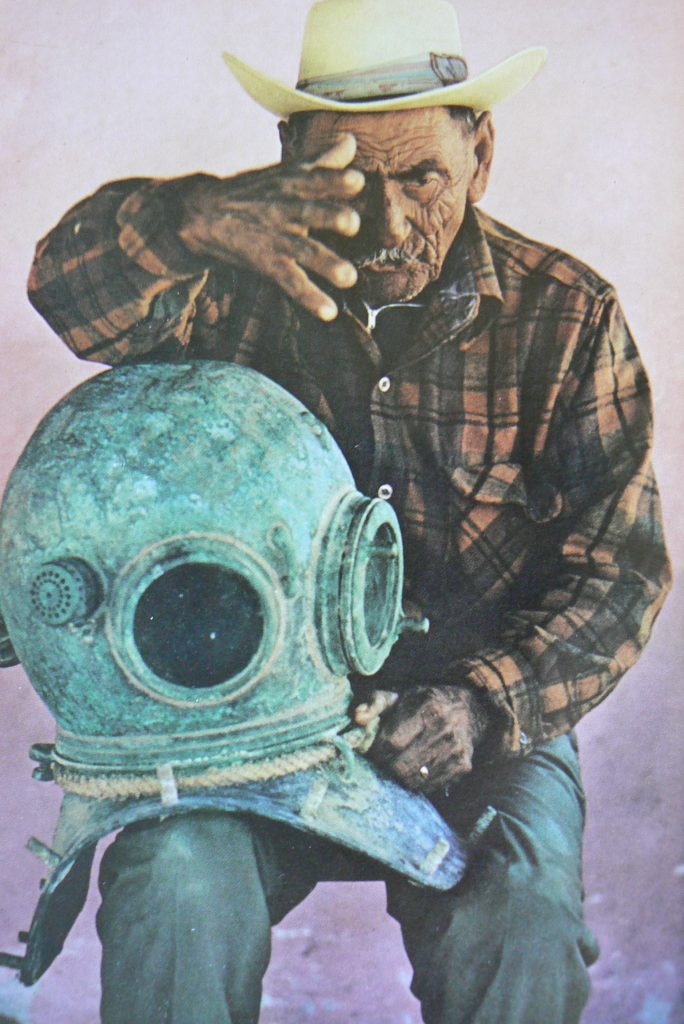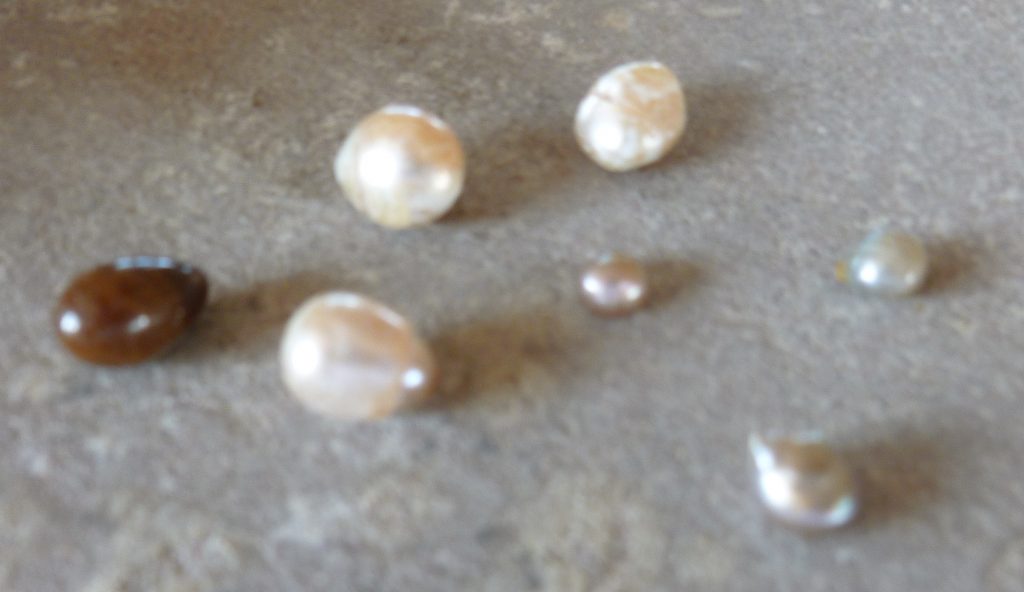For a century and a half, pearl divers repeatedly overfished and abandoned the pearl grounds along the east coast of Baja California. The pearl beds replenished themselves in a few decades before being overfished again. In 1697, when Charles the II learned that license holders spent more time gathering pearls than mapping and searching for settlement sites as the permit required, he rescinded those licenses. When the Jesuits took over administering economic activity on the peninsula, they prohibited pearl collecting for mission workers; others could get permission as long as they paid the Spanish Crown his quinto de perlas, one-fifth of the pearls they found. The Jesuits also suggested payment for themselves of one-tenth.
A century after Spain expelled the Jesuits from Baja, the pearling industry in La Paz took off. Armadores (fishing fleet owners) hired mostly Yaqui Indians from Sonora to dive for pearls. Some Yaqui Indians could dive to 20 fathoms, 120 feet, equipped only with a loincloth, knife, and catch-bag. But deaths from a variety of hazards were high.
Divers in canoes fanned out from the mother ships to dive for the madreperlas (pearl oysters). Many Yaqui divers and their families migrated to La Paz when the Territorial Deputies imposed higher duties on the armadores who hired non-residents divers. That may have included an ancestor of the future co-founder of La Ventana.
Onshore, workers opened the mollusks to look for pearls. Then they cleaned the mother-of-pearl shells and sorted them for export to Europe, where artisans used them to make buttons, inlaid tabletops, and other items. Mother-of-pearl soon brought in more money than the pearls themselves.
In 1874, an Italian and an American arrived in La Paz with diving suits and air pumps that they had used for pearl fishing in the Gulf of Panama. Divers outfitted with this equipment could harvest oyster beds deeper than 80 feet, an extreme limit for most freedivers. They sold pearls for as much as 60 times the cost of collecting them and retired after only six months of work.
As other outfitters began importing similar equipment, La Paz became the pearling capital of the world. Pearl fishing companies usually equipped small fishing boats with an air pump, a buzo (diver), two pump operators, and two rowers. A life-line man helped divers into their heavy diving suits, kept the air hoses untangled, and helped raise the buzo to the surface after a time that depended on the depth reached. It could be an hour or more in shallow waters, but only a short time from sea floors too deep for free diving.
By the early 1900s, business was booming in La Paz, a growing town of some 10,000 people.
Salomé
In 1910, Salomé León Lucero was 17 years old. He had handsome features, a broad chest, and muscular arms. One of his sons thought he had Yaqui Indian ancestry. Salomé had recently married Carlota Zazuetan, and the couple was expecting their first child.

Explains how he escaped a shark attack.
Photo by Michael E. Long for
National Geographic, October 1972.
Salomé probably saved a small sum of money working for the Ruffo brothers pearling operation in La Paz. Salomé wanted to be an independent diver. When his first son was born, he dreamed about exploring for pearls with the boy at his side. He knew the risks. Buzos suffered from hearing loss, paralysis, and rheumatism due to sudden pressure and temperature changes. Sharks and mantas sometimes attacked them. They died from equipment failures, accidents, or surfacing too quickly. However, Salomé loved the sea and knew that every pearl he found would be his to sell.
After acquiring a boat and diving gear, Salomé worked as un buzo de perlas for almost 20 years. He rarely had the ideal crew of 6. It was often just him and an assistant until a son was old enough to help. During the warmer months, from June to October, Salomé explored the pearl beds around Isla Cerralvo and the shoreline of La Ventana (the window). This name first appears on an 1886 map for the opening between Punta Montaña at the south end of Cerralvo and Punta Arena across the water. They camped on dunes near the Bufadora. One diver built a shelter there out of coral. During the evenings, divers relaxed around a campfire to share stories about the day’s work, their families back home, and rumors of newly discovered pearls beds.

Only about three of every 100 Pteria Sterna oysters collected yielded pearls. But a buzo might have to open several hundred before finding one of any value. Divers dreamed of finding the one pearl that would bring them a small fortune. One time Salomé opened an oyster and found an exceptional green pearl. He sold it for a large bag of sugar, a sack of beans, a cow, and 1500 pesos, a small fortune for those days. Years later, people claimed the owner sold the pearl to the English royal family for the Crown of Queen Elizabeth II. But another diver probably found the crown pearl in 1883—ten years before Salome’s birth. True or not, traders did sell some of the best pearls from Baja to royalty throughout Europe.
In the 1930s, Sea of Cortés oysters died from an unknown cause. Salomé was 37 years old, married to his fourth wife, and had ten sons and 11 daughters. With prospects for finding pearls declining, he decided to fish for a living with his sons. He knew that the water between Cerralvo and the peninsula teemed with fish. Salome had camped in a palmar (palm grove)on the beach near the south end of the bay, a region then known as Miramar. The location had access to La Paz through the mountains or along the coast by canoe. He decided to establish a fishing camp there.
In the fall of 1931, Salomé and his family prepared for the journey to their new home. The arroyos near the palmar were dry, so they would have to dig a pozo (well). They needed tools, fishing gear, food, water, and other supplies. With burros loaded, they said adiós to friends and the comfortable home and prosperous town they were leaving behind. The trek through the unknown wilds of the Sierra de las Cacachilas was just ahead. The challenge of building a new life on the shore of Bahía de La Ventana was about to begin.